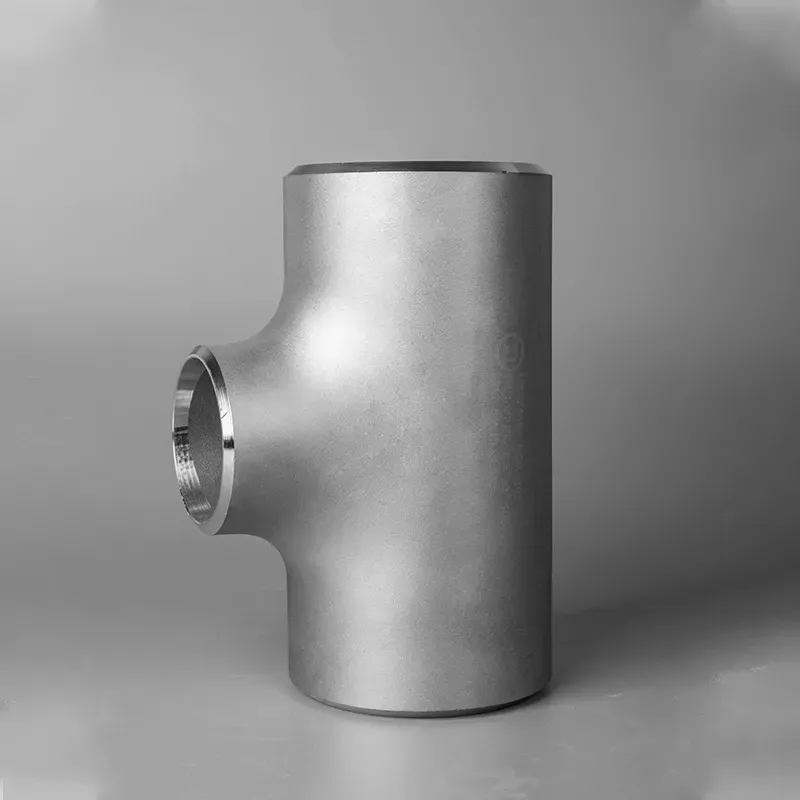-
Cangzhou Yulong Steel Co., Ltd.
-
Phone:
+86 13303177267 -
Email:
admin@ylsteelfittings.com
- English
- Arabic
- Italian
- Spanish
- Portuguese
- German
- kazakh
- Persian
- Greek
- French
- Russian
- Polish
- Thai
- Indonesian
- Vietnamese
- Zulu
- Korean
- Uzbek
- Hindi
- Serbian
- Malay
- Ukrainian
- Gujarati
- Haitian Creole
- hausa
- hawaiian
- Hebrew
- Miao
- Hungarian
- Icelandic
- igbo
- irish
- Japanese
- Javanese
- Kannada
- Khmer
- Rwandese
- Afrikaans
- Albanian
- Amharic
- Armenian
- Azerbaijani
- Basque
- Belarusian
- Bengali
- Bosnian
- Bulgarian
- Catalan
- Cebuano
- China
- China (Taiwan)
- Corsican
- Croatian
- Czech
- Danish
- Esperanto
- Estonian
- Finnish
- Frisian
- Galician
- Georgian
- Kurdish
- Kyrgyz
- Lao
- Latin
- Latvian
- Lithuanian
- Luxembourgish
- Macedonian
- Malgashi
- Malayalam
- Maltese
- Maori
- Marathi
- Mongolian
- Myanmar
- Nepali
- Norwegian
- Norwegian
- Occitan
- Pashto
- Dutch
- Punjabi
- Romanian
- Samoan
- Scottish Gaelic
- Sesotho
- Shona
- Sindhi
- Sinhala
- Slovak
- Slovenian
- Somali
- Sundanese
- Swahili
- Swedish
- Tagalog
- Tajik
- Tamil
- Tatar
- Telugu
- Turkish
- Turkmen
- Urdu
- Uighur
- Welsh
- Bantu
- Yiddish
- Yoruba

Aug . 13, 2024 22:46 Back to list
Exploring the 5L API and its Relation to PSL1 in Modern Software Development
Exploring API 5L B PSL1 An Overview of Standards for Pipeline Steel
In the world of pipeline construction and maintenance, the importance of adhering to established standards cannot be overstated. Among these standards, API 5L B PSL1 holds a significant position, serving as a guideline for the manufacturing and testing of pipeline steel used in the oil and gas industry. This article delves into the aspects of API 5L B PSL1, exploring its significance, applications, and the benefits it offers to industry stakeholders.
What is API 5L?
API 5L is a specification set forth by the American Petroleum Institute (API) for line pipe used in the transportation of oil, gas, and other fluids. It outlines various requirements regarding the chemical composition, mechanical properties, and testing methods for manufacturing steel line pipes. The specification is divided into several product specification levels (PSL), primarily PSL1 and PSL2, with PSL1 representing the basic requirements and PSL2 providing more rigorous criteria.
Features of API 5L B PSL1
API 5L B PSL1 specifically refers to the grade of steel used in pipeline applications. The 'B' denotes a particular grade with defined tensile strength, yield strength, and other mechanical properties necessary for withstanding the varying pressures within pipelines. The PSL1 level outlines the essential quality control measures and minimum design requirements, ensuring that the steel can cope with operational demands without compromising safety.
One of the key criteria in API 5L B PSL1 is the chemical composition of the steel. It typically includes a balance of carbon, manganese, and other alloying elements that enhance its mechanical properties. The specification also includes guidelines for manufacturing processes, such as the method of production—whether it’s seamless or welded—and the required inspections and tests to confirm the material’s integrity.
Applications of API 5L B PSL1
api 5l b psl1

The applications of API 5L B PSL1 are broad, primarily spanning the oil and gas industry. The steel pipes manufactured under this specification are crucial for the effective transportation of hydrocarbons over long distances, providing a reliable and safe means of transfer. They are often used in the construction of pipelines, gathering lines, and distribution lines.
Furthermore, API 5L B PSL1 pipes are also applicable in water and wastewater sectors, where robust and corrosion-resistant materials are necessary for handling various fluids. Their versatility makes them suitable for diverse environmental conditions, ensuring longevity and reduced maintenance costs.
Benefits of Using API 5L B PSL1
The adoption of API 5L B PSL1 brings several benefits to pipeline projects. Firstly, it ensures consistency in the quality of materials, reducing the risks of failures or leaks that can lead to costly downtime and environmental hazards. Secondly, compliance with recognized standards increases stakeholder confidence, as it demonstrates a commitment to safety and reliability.
Additionally, using API 5L B PSL1 can streamline regulatory approvals and inspections, as these materials meet established industry benchmarks. This can expedite project timelines and facilitate smoother operational procedures.
Conclusion
In summary, API 5L B PSL1 serves as a foundational standard for pipeline steel in the oil and gas industry, ensuring that materials meet essential performance criteria. Its application is extensive, from transporting hydrocarbons to servicing water systems, making it a key specification for engineers and project managers. By understanding and implementing the standards outlined in API 5L B PSL1, industry stakeholders can promote safety, reliability, and efficiency in their pipeline operations. The integration of such specifications not only enhances the quality of pipeline infrastructure but also contributes to the sustainable development of energy resources.
Latest news
-
ANSI 150P SS304 SO FLANGE
NewsFeb.14,2025
-
ASTM A333GR6 STEEL PIPE
NewsJan.20,2025
-
ANSI B16.5 WELDING NECK FLANGE
NewsJan.15,2026
-
ANSI B16.5 SLIP-ON FLANGE
NewsApr.19,2024
-
SABS 1123 FLANGE
NewsJan.15,2025
-
DIN86044 PLATE FLANGE
NewsApr.19,2024
-
DIN2527 BLIND FLANGE
NewsApr.12,2024
-
JIS B2311 Butt-Welding Fittings LR/SR 45°/90° /180°Seamless/Weld
NewsApr.23,2024











